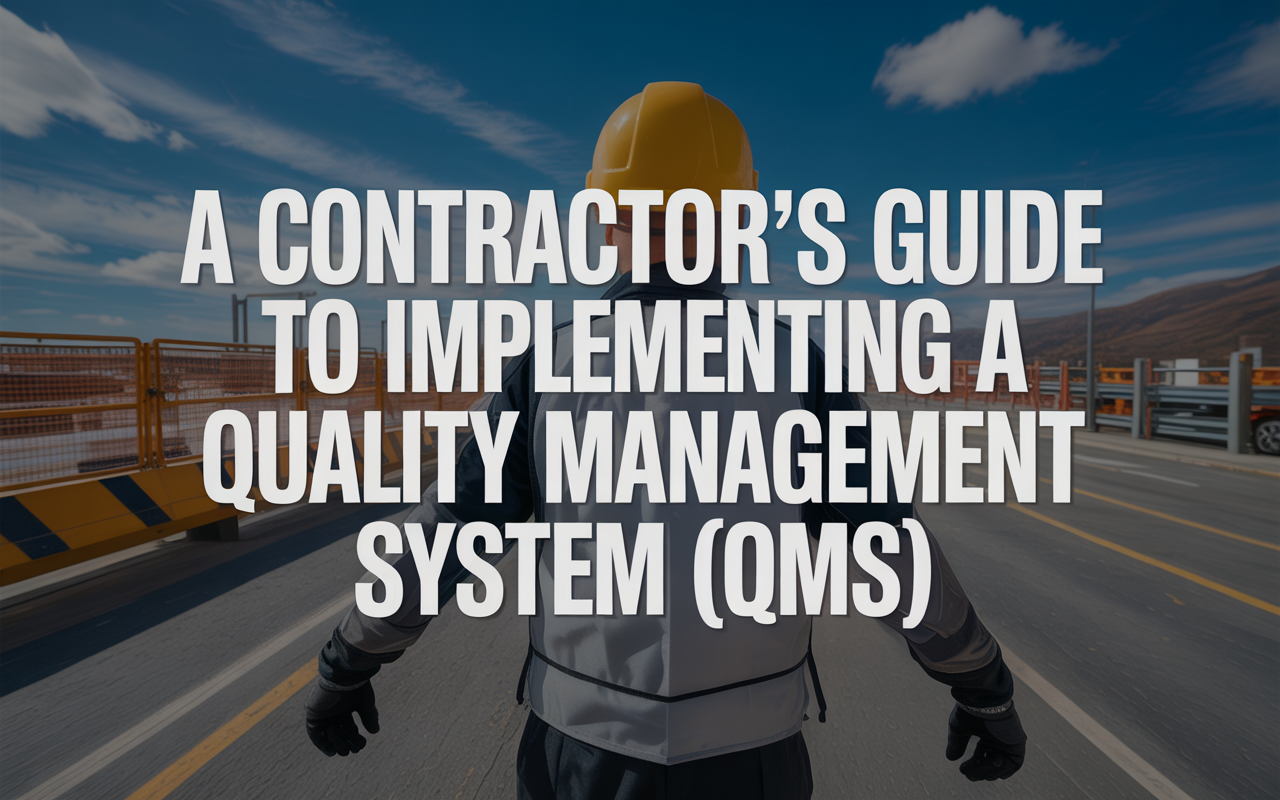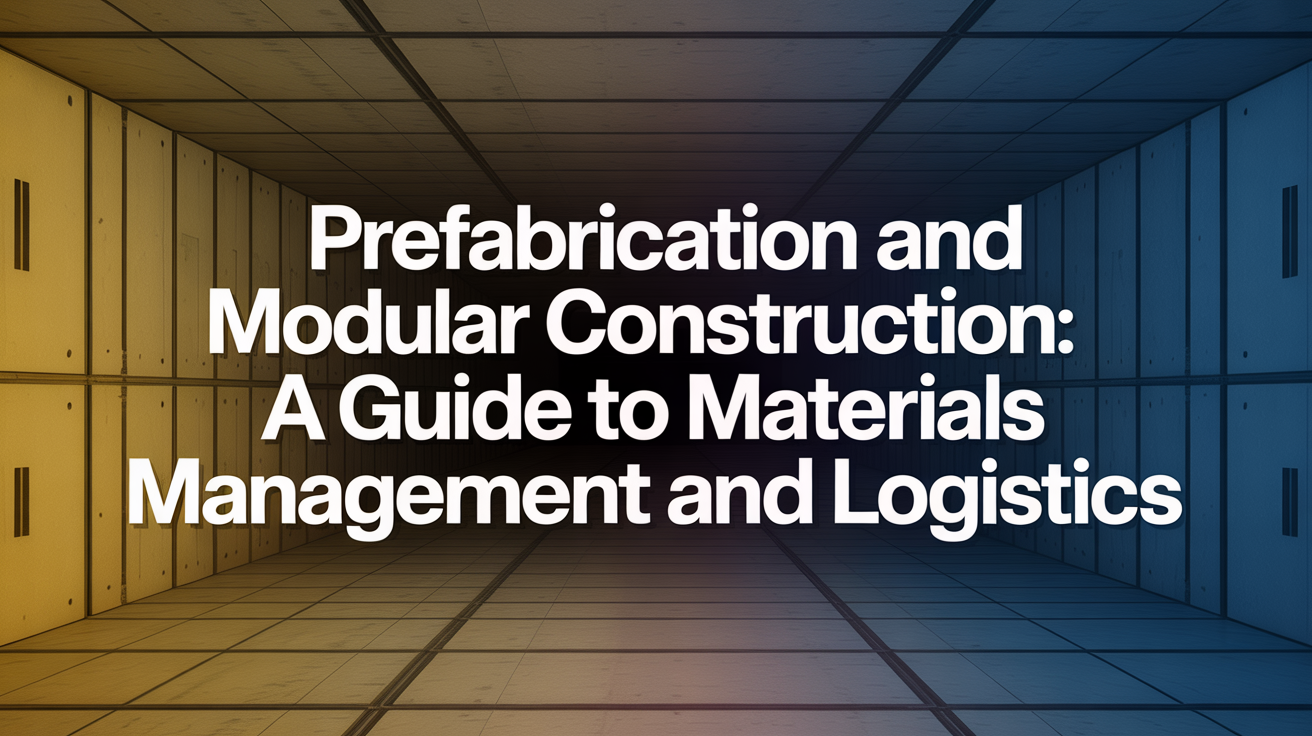A Contractor’s Guide to Implementing a Quality Management System (QMS)
Introduction
In the world of construction and contracting, delivering high-quality work is non-negotiable. A Quality Management System (QMS) acts as the backbone for ensuring that contractors consistently meet or exceed client expectations. 🏗️ For contractors, implementing a QMS isn’t just about ticking boxes-it’s about creating a culture of quality that permeates every aspect of their operations. From planning and execution to handover, a QMS ensures that every step aligns with industry standards and project requirements.
By adopting a QMS, contractors can significantly improve project outcomes, ensure compliance with regulations, and build long-lasting relationships with clients. This guide will walk you through everything you need to know about implementing a QMS tailored specifically for contractors. With the right system in place, you’ll not only meet quality benchmarks but also set new ones. Let’s dive into what a QMS really means for contractors and how it can transform your business. 🚀
What Is a Quality Management System (QMS) for Contractors?
A Quality Management System (QMS) for contractors is a structured framework designed to manage and improve the quality of work delivered on construction projects. It typically includes processes, policies, and documentation that align with industry standards like ISO 9001. These systems help contractors standardize their operations, reduce errors, and ensure consistency across all phases of a project. For example, a QMS might include protocols for material inspections, safety checks, and communication workflows. 📑
Within a contractor’s QMS, two key components are quality assurance (QA) and quality control (QC). QA focuses on preventing defects by establishing robust processes and procedures, while QC involves inspecting and testing to catch any issues before they escalate. Together, these elements create a comprehensive approach to quality management that benefits both contractors and their clients. Understanding this distinction is crucial for building an effective QMS. Now, let’s explore why implementing one is so beneficial. 🔍
Benefits of Implementing a QMS for Contractors
Implementing a QMS offers numerous advantages for contractors. First and foremost, it reduces costly errors by identifying potential problems early in the process. This leads to greater efficiency, as teams spend less time fixing mistakes and more time focusing on value-added tasks. Additionally, a QMS helps mitigate risks by ensuring compliance with regulations and industry standards, which protects contractors from legal liabilities. 😌
Beyond operational improvements, a QMS enhances client satisfaction by delivering consistent, high-quality results. Clients are more likely to trust contractors who demonstrate a commitment to quality, giving them a competitive edge. Furthermore, a well-implemented QMS fosters a culture of continuous improvement, enabling contractors to adapt to changing market demands. These benefits make adopting a QMS a smart investment for any contractor looking to grow sustainably. 💪
Key Elements of a Contractor’s QMS
The foundation of a strong QMS lies in its core elements: a clear quality policy, measurable objectives, thorough process documentation, defined roles and responsibilities, and meticulous record-keeping. The quality policy serves as a guiding principle, outlining the contractor’s commitment to quality. Objectives, on the other hand, provide specific targets to aim for, such as reducing defect rates or improving delivery times. 🎯
Continuous improvement is another critical element of a QMS. This involves regularly reviewing processes, gathering feedback, and making necessary adjustments. Leadership plays a vital role here-management must actively support and champion the QMS to ensure its success. Training is equally important, as employees need the skills and knowledge to execute their roles effectively within the system. 🧠
“The contractor’s quality management program is a written document defining the contractor’s processes, practices, and procedures, which are to ensure the project’s quality requirements are met or exceeded.” -IRMI
Finally, integrating the QMS with existing business systems, such as Enterprise Resource Planning (ERP) software, can enhance its effectiveness. Centralizing data allows for better tracking, analysis, and decision-making. By connecting quality management with broader business functions, contractors can streamline operations and achieve even greater efficiencies. This integration is key to scaling a QMS as your business grows. 📈
Step-by-Step Guide to QMS Implementation for Contractors
Implementing a QMS begins with a gap analysis to identify current strengths and weaknesses in your quality processes. Once gaps are identified, create a detailed plan outlining the steps needed to address them. This includes allocating resources, setting timelines, and defining responsibilities. Documentation is a critical next step, as it provides a clear roadmap for everyone involved. 🛠️
“Leadership – Top management takes responsibility for implementing the C-QMS to provide consistent, visible leadership, and demonstrate commitment to use of metrics, as well as the need for QMS training.” -INGAA
After planning and documentation, focus on rolling out the QMS across your organization. Engage employees at all levels to ensure buy-in and understanding. Communication is key during this phase-regular updates and training sessions can help ease the transition. Don’t forget to involve stakeholders, including clients and suppliers, to align everyone with the new system. 🤝
Once the QMS is up and running, monitor its performance closely. Collect feedback from team members and clients to identify areas for improvement. Use this information to refine processes and make adjustments as needed. Remember, a QMS is not static-it should evolve alongside your business. Regular reviews and audits will keep it relevant and effective. 🔁
“Conduct a thorough assessment of internal processes against relevant quality standards (e.g., ISO 9001) to identify gaps and areas for improvement.” -Deltek
Leadership plays a pivotal role throughout implementation and beyond. Managers must lead by example, demonstrating their commitment to the QMS and encouraging others to do the same. Ongoing review and refinement ensure that the system remains aligned with organizational goals and industry best practices. With strong leadership and a proactive approach, your QMS can become a cornerstone of success. 🌟
Defining and Documenting Quality Standards and Objectives
Selecting the right quality standards is essential for creating a QMS that works. Contractors often turn to widely recognized frameworks like ISO 9001, but project-specific requirements and local regulations should also be considered. Establishing measurable objectives is equally important-these might include reducing rework percentages, improving inspection pass rates, or meeting deadlines more consistently. 📏
“Next, firms must establish precise quality objectives aligned with project specifications and regulations. For a project like the London Underground, this involves reviewing design plans and technical analyses… identifying critical points for inspection.” -Tekmon
Developing quality control (QC) plans and quality assurance (QA) procedures tailored to your projects ensures that standards are met without unnecessary complexity. These documents should be practical, easy to follow, and adaptable to different scenarios. By aligning QC and QA efforts with real-world challenges, contractors can maintain high standards while staying flexible enough to handle unexpected changes. ✅
Assigning Roles and Responsibilities Within the QMS
Clearly assigning roles and responsibilities is crucial for the smooth operation of a QMS. Start by structuring your project teams to include dedicated quality personnel, from senior managers overseeing strategy to site operatives executing daily tasks. Subcontractors and suppliers should also be integrated into the system to ensure consistency across all aspects of the project. 🤔
“Documents required by the QMS are controlled. Written procedures are in place for controlling document approval, revision of documents and document retention. Records are generated to validate conformance and compliance…” -INGAA
Accountability is key-each individual should know exactly what’s expected of them and how their work contributes to overall quality goals. For instance, a site supervisor might be responsible for conducting regular inspections, while procurement staff ensure materials meet specifications. Maintaining organizational clarity prevents confusion and ensures everyone pulls in the same direction. When roles are well-defined, collaboration becomes seamless. 🤝
Training and Competence in QMS for Construction Project Teams
Training is the backbone of a successful QMS. All team members, regardless of their role, need to understand how the system works and why it matters. This includes everything from basic awareness sessions to specialized courses on quality assurance and control techniques. Investing in education pays off by empowering employees to contribute meaningfully to quality goals. 🎓
“Organizations require employees engaged in construction to participate in QMS-specific training.” -INGAA
To evaluate competence, consider using assessments, certifications, or on-the-job evaluations. Keeping detailed records of training activities ensures accountability and helps identify areas where additional support may be needed. Continuous learning opportunities, such as workshops or online courses, keep skills sharp and foster a mindset of growth. A well-trained team is your greatest asset in achieving quality excellence. 🌱
Process Mapping, Documentation, and Control in a QMS
Mapping out essential processes is a fundamental step in building a QMS. This involves breaking down each stage of a project into manageable steps and documenting them clearly. Doing so creates a visual representation of workflows, making it easier to spot inefficiencies or bottlenecks. Detailed work instructions ensure that everyone knows exactly what to do, minimizing misunderstandings. 🗺️
“Conduct regular internal audits to assess the effectiveness of the QMS implementation, identify non-conformities and take corrective actions as necessary.” -Deltek
Document control is equally important. Best practices include version management, secure storage, and restricted access to prevent unauthorized changes. Regular audits of documentation ensure compliance and accuracy. When processes and documents are tightly controlled, contractors can trust that their QMS reflects reality and supports quality goals. Good documentation is like a blueprint for success. 📂
Monitoring, Auditing, and Continuous Improvement Strategies
Regular monitoring and auditing are vital for maintaining a healthy QMS. Internal audits allow contractors to assess how well the system is working and identify areas for improvement. Feedback loops, such as surveys or meetings, provide valuable insights from employees and clients alike. Using this information, corrective and preventive actions can be implemented to address issues before they escalate. 🔍
“Integration with business systems such as a company’s Enterprise Resource Planning (ERP) system ensures that data and information flow smoothly between different business systems and departments.” -Deltek
Fostering a culture of continuous improvement requires leadership commitment and employee engagement. Encourage teams to share ideas for enhancing processes and reward innovative thinking. By embracing change and striving for excellence, contractors can stay ahead of the competition and deliver exceptional results. Continuous improvement isn’t just a strategy-it’s a mindset. 🔄
Leveraging Technology and Digital Tools for QMS Implementation
Digital tools can revolutionize QMS implementation by simplifying document control, automating workflows, and enabling real-time data tracking. Software solutions designed for construction, such as ERP systems or specialized QMS platforms, centralize information and make it accessible to everyone who needs it. Onsite inspections become faster and more accurate with mobile apps, while automated alerts ensure nothing falls through the cracks. 💻
“Organizations require use of a C-QMS and effective auditing of the contractor’s program. May include use of the owner/operator’s C-QMS.” -INGAA
Technology also enhances scalability, allowing contractors to expand their QMS as their business grows. Cloud-based platforms enable remote collaboration, making it easier to manage large or geographically dispersed projects. By leveraging digital tools, contractors can increase efficiency, transparency, and accountability, ultimately leading to better outcomes for everyone involved. The future of quality management is digital-don’t get left behind! 🚀
Common Challenges and How to Overcome Them
Implementing a QMS isn’t without its challenges. Resistance to change, limited resources, and lack of buy-in from stakeholders are common obstacles. To overcome these barriers, start by communicating the benefits of the QMS clearly and involving employees in the process. Demonstrating quick wins can build momentum and encourage wider adoption. 🙌
“Tekmon’s Integrated QMS replaces these inefficiencies with a centralized digital platform, ensuring all data-from contractor performance to critical point checks-is accessible in real time.” -Tekmon
Securing leadership support is another critical factor. When top management champions the initiative, it sends a powerful message to the rest of the organization. Providing adequate training and resources also helps ease the transition. Remember, patience and persistence are key-change takes time, but the rewards of a successful QMS are well worth the effort. 🏆
Case Studies: QMS Success Stories in Construction
Many contractors have successfully implemented QMS programs, achieving remarkable results. For example, one mid-sized firm reduced defect rates by 30% after adopting ISO 9001 principles and integrating them into their daily operations. Another company improved client satisfaction scores by streamlining communication and documentation processes. These successes highlight the transformative power of a well-executed QMS. 🏅
“QMS documentation must comply with requirements of AS/NZS ISO 9001:2016 Quality management systems – Requirements.” -Anitech Group
Lessons learned from these case studies emphasize the importance of leadership, employee engagement, and adaptability. Contractors who embrace innovation and prioritize quality tend to see the most significant gains. By studying these examples, others can replicate proven strategies and tailor them to their unique needs. Success leaves clues-if you’re willing to look for them. 🔍
FAQs about Implementing a QMS as a Contractor
What are the basic steps to implement a QMS for contractors?
The basic steps include assessing current practices, defining quality standards, documenting processes, training employees, monitoring performance, and continually refining the system based on feedback and results. Each step builds upon the last to create a cohesive and effective QMS. 📋
How long does it take to implement a QMS?
The timeline depends on factors like the size of the organization, complexity of projects, and level of preparation. Small contractors might complete implementation in six months, while larger firms could take a year or more. Patience and careful planning are essential for success. ⏳
Is QMS certification, like ISO 9001, necessary for all contractors?
Certification isn’t mandatory for every contractor, but it can be highly beneficial, especially for those working on large or regulated projects. Alternatively, contractors can develop their own QMS tailored to their needs, provided it meets client and regulatory expectations. Certifications simply add credibility. 📜
What is the difference between quality assurance and quality control in construction?
Quality assurance focuses on preventing defects by establishing robust processes, while quality control involves inspecting and testing to detect and correct issues. Both are essential components of a comprehensive QMS. 🧩
How often should a QMS be reviewed or updated?
A QMS should be reviewed at least annually, though major changes in regulations, technology, or business operations may necessitate more frequent updates. Regular reviews ensure the system remains relevant and effective. 🔄
Conclusion
A robust QMS is a game-changer for contractors, offering benefits that extend far beyond mere compliance. By reducing risks, improving efficiency, and enhancing client satisfaction, a QMS positions contractors for long-term success. It’s not just about meeting standards-it’s about exceeding them and setting new benchmarks for excellence. 🌟
If you haven’t already started implementing a QMS, now is the time. Begin with leadership commitment, thorough planning, and comprehensive training. Embrace continuous improvement and leverage technology to stay ahead of the curve. The journey to quality excellence starts today-take that first step and watch your business thrive! 🚀



